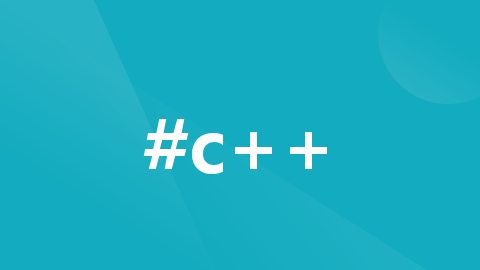
C++的 tuple
·
本文目录
1. 基本介绍
tuple 是 C++11 新标准里的类型,它是一个类似 pair 类型的模板。tuple 是一个固定大小的不同类型值的集合,是泛化的 std::pair。我们也可以把它当做一个通用的结构体来用,不需要创建结构体又获取结构体的特征,在某些情况下可以取代结构体使程序更简洁直观。std::tuple 理论上可以有无数个任意类型的成员变量,而 std::pair 只能是2个成员,因此在需要保存3个及以上的数据时就需要使用 tuple 元组,而且每个确定的 tuple 类型的成员数目是固定的。
「注意」:使用tuple的相关操作需要包含相应头文件:
一种实现方式:
#include<iostream>
#include<string>
using namespace std;
template <typename ... Tail> class Tuple;
template<> class Tuple<> {};
template <typename Head, typename ... Tail>
class Tuple<Head, Tail ...> : Tuple<Tail ...>
{
Head Val;
public:
Tuple() {}
Tuple(Head value, Tail ... tail) : Val(value), Tuple<Tail ...>(tail ...) {}
Head value() { return Val; }
Tuple<Tail ...> next() { return *this; }
};
int main()
{
Tuple<char, double, string> tuple('1', 1.5, "Hello World");
cout << tuple.value() << endl; // 1
cout << tuple.next().value() << endl; // 1.5
cout << tuple.next().next().value() << endl; // Hello World
return 0;
}
2. tuple 所支持的操作
make_tuple(v1,v2,v3,v4…vn):返回一个给定初始值初始化的tuple,类型从初始值推断。t1 == t2:当两个tuple具有相同数量的成员且成员对应相等时。t1 != t2:与上一个相反。get(t):返回t的第i个数据成员。tuple_size::value:给定了tuple中成员的数量。
3. 基本用法
3.1 定义和初始化
//使用tuple默认构造函数,创建一个空的tuple对象
tuple<string, int, double> t1;
//使用直接(显式)初始化,不能用“=”初始化
tuple<int, vector<int>> t2(3, { 4, 5, 6 });
//可以用make_tuple()函数生成tuple对象,此处自动推断出t3的类型为tuple<int,int,int>
auto t3 = make_tuple(7, 8, 9);
//tuple的元素类型可以是一个引用
std::tuple<T1&> t4(ref&);
3.2 访问
- 用
get标准库模板进行访问其元素内容 - 用
tuple_size访问其元素个数 - 用
tuple_element访问其元素类型
#include<iostream>
#include<string>
#include<tuple>
using namespace std;
int main()
{
auto t1 = make_tuple(1, 2, 3, 4.4);
cout << "第1个元素:" << get<0>(t1) << endl;//和数组一样从0开始计
cout << "第2个元素:" << get<1>(t1) << endl;
cout << "第3个元素:" << get<2>(t1) << endl;
cout << "第4个元素:" << get<3>(t1) << endl;
typedef tuple<int, float, string>TupleType;
cout << tuple_size<TupleType>::value << endl;
tuple_element<1, TupleType>::type fl = 1.0;
return 0;
}
输出结果:
第1个元素:1 第2个元素:2 第3个元素:3 第4个元素:4.4 3
3.3 tuple 比较和 tuple 作为返回值
如果tuple类型进行比较, 则需要保持元素数量相同, 类型可以比较, 如相同类型, 或可以相互转换类型(int&double);
#include <iostream>
#include <vector>
#include <string>
#include <tuple>
using namespace std;
tuple<string, int> giveName()
{
string str("Caroline");
int a(2023);
tuple<string, int> t = make_tuple(str, a);
return t;
}
int main()
{
tuple<int, double, string> t(64, 128.0, "Caroline");
tuple<string, string, int> t2 = make_tuple("Caroline", "Wendy", 1992);
//返回元素个数
size_t num = tuple_size<decltype(t)>::value;
cout << "num = " << num << endl;
//获取第1个值的元素类型
tuple_element<1, decltype(t)>::type cnt = get<1>(t);
cout << "cnt = " << cnt << endl;
//比较
tuple<int, int> t3(24, 48);
tuple<double, double> t4(28.0, 56.0);
bool ret = (t3 < t4);
cout << "ret = " << ret << endl;
//tuple作为返回值
auto t5 = giveName();
cout << "name: " << get<0>(t5) << " years: " << get<1>(t5) << endl;
return 0;
}
输出结果:
num = 3
cnt = 128
ret = 1
name: Caroline years: 2023
3.4 还有一种方法也可以获取元组的值,通过 std::tie 解包tuple
int x, y;
string s;
std::tie(x, s, y) = t;
通过tie解包后,t中三个值会自动赋值给三个变量。
解包时,我们如果只想解某个位置的值时,可以用std::ignore占位符来表示不解某个位置的值。比如我们只想解第三个值时:
std::tie(std::ignore, std::ignore, y) = t; // 只解第三个值
3.5 通过 tuple_cat 连接多个 tuple
#include <iostream>
#include <string>
#include <tuple>
using namespace std;
int main()
{
tuple<int, string, float> t1(10, "test", 3.14);
int n = 7;
auto t2 = tuple_cat(t1, make_pair("Foo", "bar"), t1, tie(n));
n = 10;
// 10 test 3.14 Foo bar 10 test 3.14 10
cout << get<0>(t2) << " " << get<1>(t2) << " " << get<2>(t2) << " "
<< get<3>(t2) << " " << get<4>(t2) << " " << get<5>(t2) << " "
<< get<6>(t2) << " " << get<7>(t2) << " " << get<8>(t2) << endl;
return 0;
}
推荐内容
阅读全文
AI总结
更多推荐
 已为社区贡献18条内容
已为社区贡献18条内容
相关推荐
查看更多
A2A
谷歌开源首个标准智能体交互协议Agent2Agent Protocol(A2A)
adk-python
一款开源、代码优先的Python工具包,用于构建、评估和部署灵活可控的复杂 AI agents
Second-Me
开源 AI 身份系统,通过本地训练和部署,模仿用户思维和学习风格,创建专属AI替身,保护隐私安全。
热门开源项目
活动日历
查看更多
直播时间 2025-04-09 14:34:18


樱花限定季|G-Star校园行&华中师范大学专场
直播时间 2025-04-07 14:51:20


樱花限定季|G-Star校园行&华中农业大学专场
直播时间 2025-03-26 14:30:09


开源工业物联实战!
直播时间 2025-03-25 14:30:17


Heygem.ai数字人超4000颗星火燎原!
直播时间 2025-03-13 18:32:35


全栈自研企业级AI平台:Java核心技术×私有化部署实战












所有评论(0)